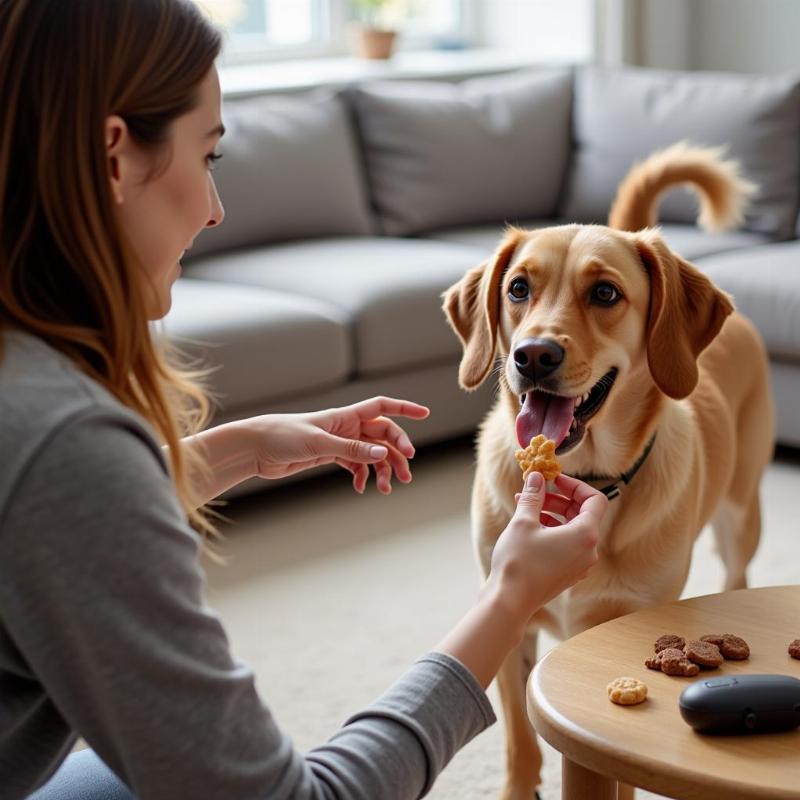Turning the mad dog into a genteel lord chapter 1 often marks the beginning of a transformative journey for both dog and owner. This initial chapter in canine etiquette focuses on laying the groundwork for future success by addressing fundamental behavior issues, understanding canine communication, and establishing a positive training environment. This journey emphasizes patience, consistency, and a deep understanding of your dog’s individual needs.
Understanding Canine Communication in “Turning the Mad Dog…” Chapter 1
Chapter 1 of “Turning the Mad Dog into a Genteel Lord” dives deep into understanding your dog’s language. It’s not just about barks and whines; it’s about subtle body language cues like ear position, tail wags, and even the way they hold their breath. Recognizing these signals is crucial for effective communication and building a strong bond. Misinterpreting these cues can lead to frustration and hinder the training process. Do you know what a tucked tail signifies versus a relaxed, wagging one? Understanding this nuanced language is the first step in turning your mad dog into a well-behaved companion.
Establishing a Positive Training Environment (Chapter 1)
Creating a positive learning environment is paramount in “Turning the Mad Dog…” Chapter 1. This involves minimizing distractions, using positive reinforcement methods like treats and praise, and keeping training sessions short and engaging. Consistency is key. Just like with children, dogs thrive on routine and clear expectations. Setting consistent boundaries and rewarding desired behaviors will yield much faster results than punishment or harsh corrections. A calm, structured environment sets the stage for success.
 Creating a Positive Training Environment
Creating a Positive Training Environment
Addressing Fundamental Behavior Issues in the First Chapter
Chapter 1 of “Turning the Mad Dog into a Genteel Lord” often tackles common behavioral issues like excessive barking, jumping, and leash pulling. These issues, if left unaddressed, can escalate and create a stressful environment for both dog and owner. The book likely provides actionable strategies, rooted in positive reinforcement, to help redirect these unwanted behaviors into more desirable ones. It’s about replacing bad habits with good ones, gradually and consistently.
Implementing the Lessons from “Turning the Mad Dog…” Chapter 1
Putting the lessons of Chapter 1 into practice requires patience and dedication. Remember, Rome wasn’t built in a day, and neither is a well-behaved dog. Consistent practice, positive reinforcement, and a keen understanding of your dog’s communication will lead to significant improvements over time. Don’t be discouraged by setbacks; they’re a normal part of the learning process. Celebrate small victories and stay committed to the journey.
Conclusion
Turning the mad dog into a genteel lord chapter 1 is the crucial first step in transforming your canine companion into a well-mannered member of society. By understanding canine communication, establishing a positive training environment, and addressing fundamental behavior issues, you lay the foundation for a harmonious relationship with your dog. Remember, patience, consistency, and a genuine understanding of your dog’s needs are the keys to unlocking their full potential.
FAQ
- What are the key takeaways from Chapter 1 of “Turning the Mad Dog into a Genteel Lord”? Understanding canine communication, creating a positive training environment, and addressing basic behavior issues are the cornerstones of this chapter.
- How can I create a positive training environment for my dog? Minimize distractions, use positive reinforcement techniques like treats and praise, and keep training sessions short and engaging.
- What are some common behavior issues addressed in Chapter 1? Excessive barking, jumping, and leash pulling are frequently discussed.
- Why is consistency important in dog training? Just like humans, dogs thrive on routine and predictability. Consistent training helps them learn faster and more reliably.
- What if my dog doesn’t respond to the training techniques in Chapter 1? Don’t be discouraged! Every dog is unique. Be patient, adjust your approach if necessary, and consider seeking guidance from a certified professional dog trainer.
- Where can I find more resources on positive reinforcement training? The American Kennel Club and various reputable online resources offer valuable information on positive reinforcement techniques.
- How do I know if I’m correctly interpreting my dog’s body language? Consult resources on canine communication and consider working with a professional dog trainer to refine your understanding.
Beautdogs.us is your premier destination for all things dog-related in the USA. We offer expert advice on dog breeds, care, and training, helping you navigate the joys and challenges of dog ownership. Whether you’re a seasoned dog owner or just starting your journey with a furry friend, Beautdogs.us provides reliable, comprehensive, and engaging information to empower you to provide the best possible care for your beloved companion. Contact us today for personalized advice and support! Email: [email protected], Phone: +1 501-555-7529.